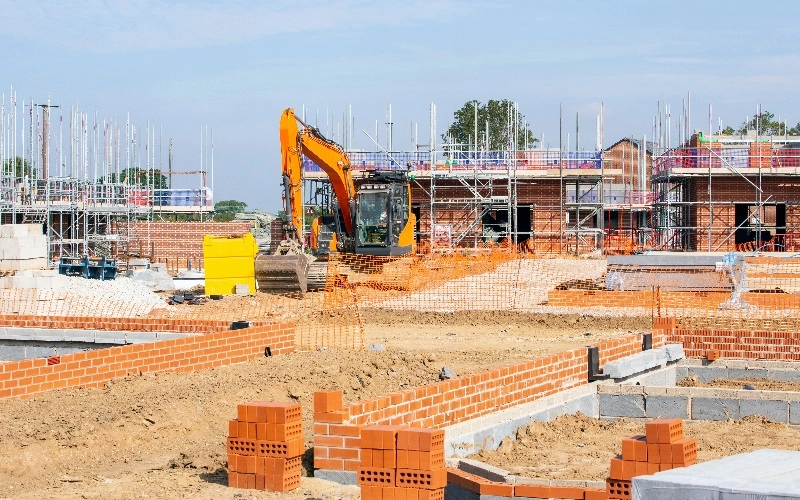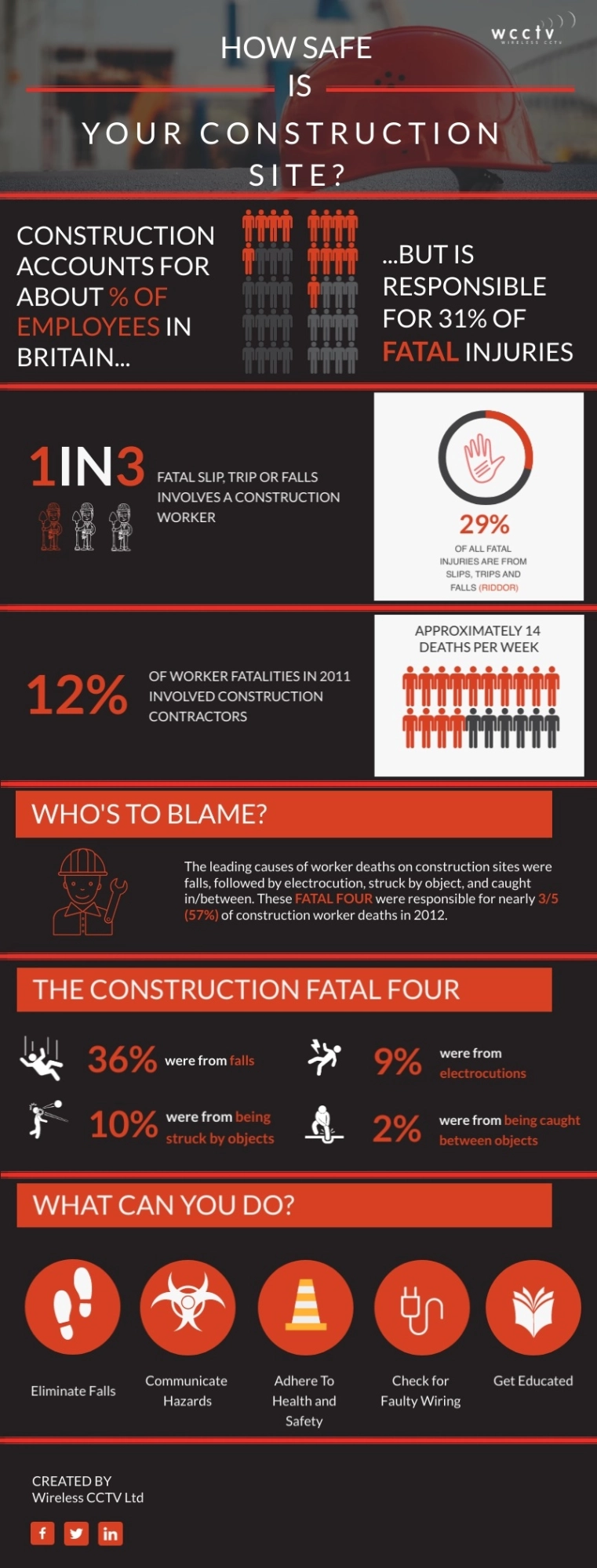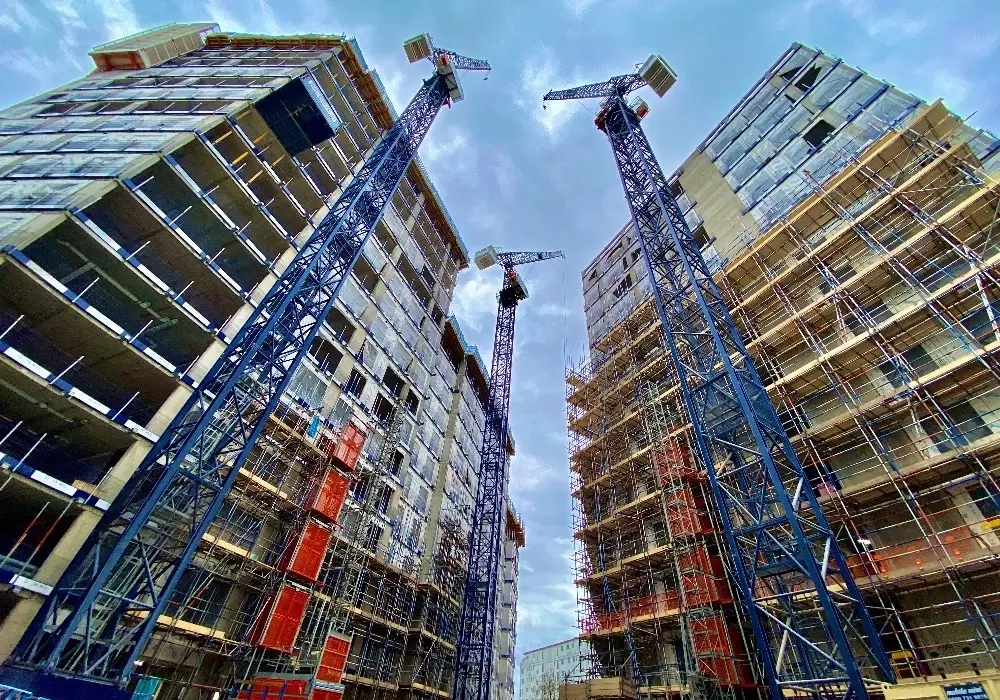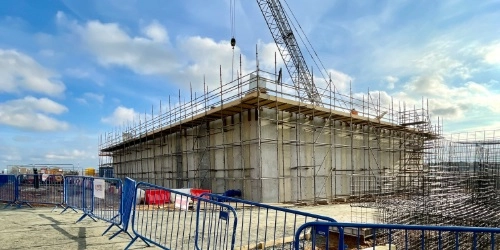Accidents occur every day in the construction industry. Below, WCCTV details some of the most common accidents and outlines how companies can mitigate them.
Although the hazards associated with construction sites are well known, and most employers are aware of their duty of care, the HSE still paces them as the most hazardous working environment by fatality rate.
What are the Top 10 risks when working on a Construction Site?
Construction workers account for roughly 5% of the UK's total workforce, but 31% of the UK's fatal injuries occur on construction sites.
We have listed some main hazards encountered on a typical construction site and measures to reduce them.

1. Working From Height
Working from height accounts for a large percentage of the accidents and fatalities on construction sites.
Unfortunately, it is often an unavoidable part of the job, particularly for building projects. As a risk that cannot be removed entirely, working from height must be made as safe as possible.
This includes making sure access is clear, mobility is considered, and all staff receive adequate working from height training.
2. Moving Objects
Construction sites are ever-changing environments, and worker safety often relies on continual awareness of one's surroundings.
Moving objects such as vehicles, machinery, overhead lifting equipment present a significant hazard, particularly as vehicles are often manoeuvring in areas of limited space, visibility, and uneven terrain.
3. Slips, Trips and Falls
Construction sites are a hive of activity, with conditions, layouts, and terrain changing daily, if not hourly.
With a combination of holes in the ground, buildings at various stages of completion, scaffolding, stored materials and equipment: construction workers face the constant hazard of slips, trips and falls.
Regular risk assessments and safety briefings will help minimise the risks. Regularly communicate with your team and empower them to spot and avoid hazards.
4. Noise
Noise is a dual source of risk: repetitive, excessive noise can cause long term hearing problems, and it can also create a distraction or communication barrier that leads to accidents.
A documented and comprehensive noise risk assessment will help companies identify the most appropriate hearing protection equipment to issue to staff.
5. Vibration
Hand-arm vibration syndrome is a painful and debilitating disease of the blood vessels, nerves, and joints triggered by the prolonged use of vibratory power tools and ground working equipment.
This can then be followed by Raynaud's phenomenon resulting from changes in the blood vessels and resulting in white fingers.
You can find a range of expert advice on limiting this particular condition here: Hand Arm Vibration Syndrome.

6. Material and Manual Handling
Injuries and accidents caused by improper manual and material handling are common in many workplaces, but this is especially true for the construction industry.
Although the volume of heavy lifting a worker will be required to undertake will depend on their particular trade, every employee should receive some form of manual handling training.
Where the employee is required to use lifting equipment, they should receive accredited training, which is assessed and certified by a practical test. All training records should be retained and regularly reviewed.
7. Collapse
Excavations and trenches are at risk of collapse, which can cause serious injury to the people working in them.
Companies must take precautions at the outset of every project to ensure that all working conditions are safe and stable.
8. Asbestos
Although the proliferation of asbestos has significantly reduced over the decades, it is still a clear and present danger for those construction workers involved in refits, renovations or demolition.
An estimated 500,000 public buildings in the UK contain harmful asbestos materials: often hidden away, forgotten, and by and large, harmless – in its undisturbed state.
Several training courses can help your workers understand how to identify materials containing asbestos and what to do.
9. Respiratory Hazards
An invisible and toxic mixture of hazardous materials and fibres that can damage the lungs can be found in the dust that swirls around construction sites.
These particles can lead to chronic obstructive pulmonary disease, asthma and silicosis.
Employers need to ensure their staff are provided with adequate safety equipment/PPE and trained on when and how to use it.
A culture of using the equipment must be instilled, including penalties for those working without the correct PPE.
10. Electricity
On average, three construction industry workers are electrocuted each year during refurbishment work on commercial and domestic buildings, and 9% of workplace fatalities are because of electrocution.
Regular training for all staff working with or near electricity is essential to reduce this risk.
Why use WCCTV?
As the UK's leading supplier of temporary CCTV systems for construction sites, we have developed a complete range of safety and security solutions to keep your construction sites smart by day and secure by night.
Alongside our rapid deployment CCTV Towers, we can provide additional services that enhance the overall well-being of your projects, including:
- Environmental sensors to track air quality, vibration and noise levels
- 24/7 cameras that record day and night for health and safety overviews
- ANPR cameras to track vehicle speeds around site and along hall roads
Our engineers service or install equipment on hazardous worksites every day, and we pride ourselves on our safety record and practices.
Our Rapid Deployment CCTV Tower systems not only enhances the security of construction sites but also provides site managers with a remote project management tool that can help improve safety in real-time and by retrospective review.
Ready to find out how Rapid Deployment CCTV can work for you? Get in touch today at 0800 470 4630 or request a call back


